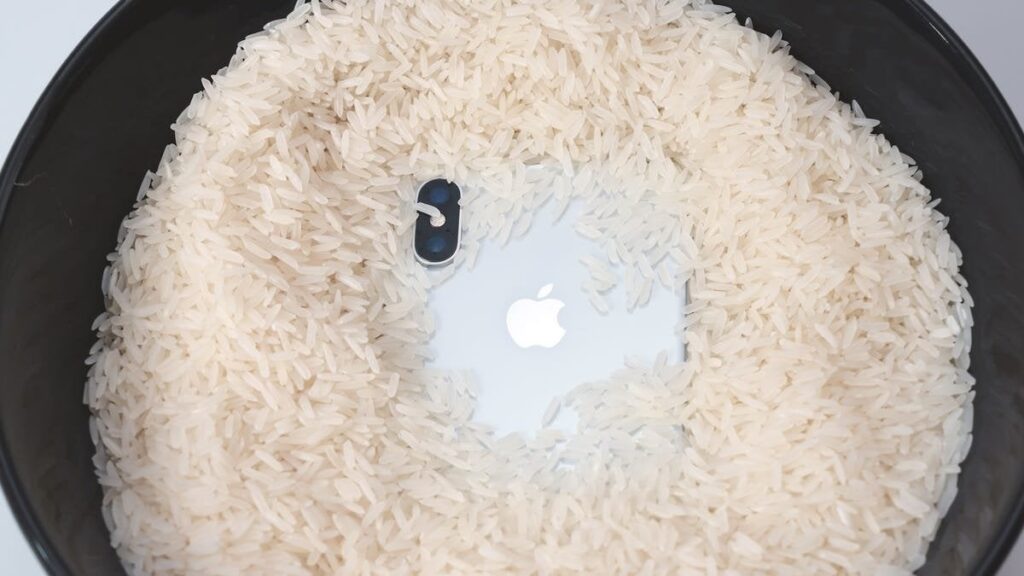Apple is cautioning against the common practice of drying wet iPhones in bags of rice, emphasizing that it may lead to damage due to rice particles, according to recent guidance published by the tech giant.
Despite the method’s widespread popularity, experts have long cautioned against its efficacy, with studies indicating its ineffectiveness in removing moisture from devices.
The Cupertino-based company is now urging users to gently tap out any liquid from their wet iPhones, position the phone connector downwards, and allow it to air dry instead.
Despite the advancement in smartphone technology, the remedies for water-damaged devices remain relatively simplistic.
Apple’s guidance extends beyond rice bags, advising against using external heat sources or compressed air, such as hairdryers or radiators, to dry wet phones. Additionally, the company discourages users from inserting foreign objects, like cotton swabs or paper towels, into their devices.
Instead, Apple recommends placing the wet phone in a dry area with adequate airflow before attempting to recharge it.
While newer smartphone designs are becoming increasingly water-resistant, many users may still require guidance on handling water-damaged devices, especially as the demand for second-hand mobile devices continues to rise globally.
Since the iPhone 12 series, Apple devices have boasted increased water resistance, with the ability to withstand immersion in water up to six metres deep for half an hour. Despite these advancements, proper care for wet smartphones remains crucial for device longevity and optimal performance.
As smartphone technology evolves, users can anticipate more robust water-resistant features, potentially rendering traditional drying methods obsolete. However, until then, users are encouraged to follow Apple’s recommendations for drying wet iPhones to avoid potential damage.











More Stories
Faisal Islam: Can the US Tech Bromance Revive the UK Economy?
AI Boom Powers Nvidia’s Growth Despite Rising US-China Tensions
SpaceX Achieves Successful Starship Launch in Dramatic Comeback